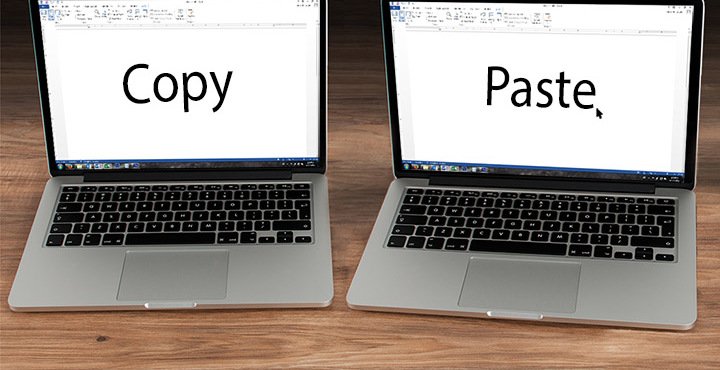To really dig into a text, you can't be afraid to get your hands dirty.
It's true that close reading requires a lot of digging, and digging into a well-written text can yield great treasures. It's a lot of work, sure, but there's nothing quite so satisfying.
I'm not talking about brushing the surface of the soil with a plastic shovel; I'm talking about the kind of close reading strategies that get dirt under your fingernails and have you flinging fistfuls of it over your shoulder.
Digging isn't easy. Your arms may get tired, or it's possible that you'll dig for hours and not even find a pebble. Maybe you're a novice. Maybe you've only ever planted a peony or buried a goldfish, and you've never been treasure hunting.
That's totally fine!
If you'd like to scoop out some dirt and see what's underneath the topsoil, though, these close reading strategies will help you uncover both wriggling bugs and shiny treasures. Both are valuable!
1. Scratch the surface
It's a little obvious, maybe, but to do a close reading of a text, you first have to read it. Read the text as you normally would. That means understanding the plot, the basic themes, the names of characters, and all of the story's building blocks.
It also means taking note of your first impressions. Do you hate the story? Does a certain character bother you? These judgements are generally discouraged during analyses. However, they are important to note when you scratch the surface of the text because they can definitely lead to something more important.
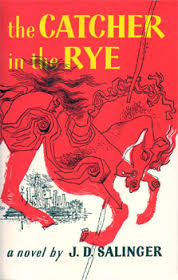 Let's say you hate Bella Swan of Twilight or Holden Caulfield of The Catcher in the Rye. Maybe you've gotten as far as identifying why you hate this character. Bella is always the victim; she always needs saving, giving a bad name to empowered female protagonists like Katniss Everdeen of The Hunger Games. Holden is constantly judging and criticizing other characters in the novel for being phony and insecure.
Let's say you hate Bella Swan of Twilight or Holden Caulfield of The Catcher in the Rye. Maybe you've gotten as far as identifying why you hate this character. Bella is always the victim; she always needs saving, giving a bad name to empowered female protagonists like Katniss Everdeen of The Hunger Games. Holden is constantly judging and criticizing other characters in the novel for being phony and insecure.
The best part about literary analysis is that you don't have to love every character (Hint: it's just like real life!). It is vital that you examine why you've formed these first impressions, though. If you find anything interesting or notable on your first read-through, then guess what? It's probably important.
Bella isn't supposed to be a strong female character. At best, she's meant to be relatable, and at worst, she's intended to be a victimized heroine in a romance novel. Surprise! Furthermore, the entire point of Holden's character is that he is a hypocrite. He is a teenager, after all. (I'm only half-joking.) The Catcher in the Rye, as a coming-of-age novel horribly simplified, is about a young adult coming to terms with everything he hates about the adult world, all exemplified through his thoughts and feelings.
Pretty cool, right?
So, even scratching the surface of the text is vital to uncovering it. First impressions are everything, and they should not be discouraged on the first read-through. They need to be examined!
2. Examine what evidence you can find
Now that you have an understanding of the basic elements of the text and you've formed some opinions, it's time to examine what evidence you can uncover. In any piece of good writing, there should be facts you cannot deny. The Book Thief is not set in the future. Harry Potter does not think through consequences carefully before he acts. To Kill a Mockingbird does not advocate racism. It seems easy, but not all of the evidence will be quite so obvious.
Can you deny that Romeo and Juliet is an example of a beautiful and romantic love story? Probably. Can you also deny that it's a parody of young love as foolish? Maybe. But what can't you deny? That Romeo and Juliet die tragically because of a familial feud. Your opinion matters in your reading, but the facts also matter. Not everything is subjective.
You have to be cautious using this tip as one of your close reading strategies because, if done poorly, a close reading can turn into nothing more than a summary. While the provided example of Romeo and Juliet might properly illustrate a good analysis of a text, it's rudimentary at best.
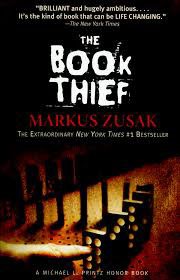 Certainly, the examples of The Book Thief and To Kill a Mockingbird will not impress your teacher or professor. Still, examining the evidence is a two-step process. First, uncover what's undeniable. Then, expand on it; don't summarize. How can you build on the obvious ideas to create a new one, or at least, a more interesting one? Harry is not a cautious character; that much is obvious. However, off the top of your head, are there questions you can ask about this undeniable fact?
Certainly, the examples of The Book Thief and To Kill a Mockingbird will not impress your teacher or professor. Still, examining the evidence is a two-step process. First, uncover what's undeniable. Then, expand on it; don't summarize. How can you build on the obvious ideas to create a new one, or at least, a more interesting one? Harry is not a cautious character; that much is obvious. However, off the top of your head, are there questions you can ask about this undeniable fact?
Here are some of mine: Is there a reason that Harry does not think before he acts? Maybe it's related to his traits as a Gryffindor and hesitance toward the slyer traits within him that might turn him into the Slytherin he so fears being. Is his lack of cautiousness portrayed as a good trait or a bad one? Maybe he's not often punished for his rebelliousness because his actions frequently garner both good and bad results; further, when he is punished, it's usually by a biased character, sometimes even one we're not supposed to like as readers. Is this trait linked to his being a child, and does this view of childhood reflect a specific view of children? Maybe the author is departing from the moralistic literature that punishes children for the curiosity naturally found in childhood.
These are just quick, off-the-cuff examples, but they can help to avoid summary and help you to expand on the ideas already present in the text.
3. Find the obsessions
So, you have the obvious facts and the undeniable ideas down. It's time to find the writer's obsessions. This should be easy. All writers have obsessions that, whether they are unconsciously or purposely placed, will pop up again and again.
As you dig, you will find worms that the author tried to hide, and you'll find treasures that the author buried for you specifically to uncover. What you find may not always be pretty, but you'll know your close reading is going well when you start uncovering writerly obsessions. This makes digging into a text worthwhile.
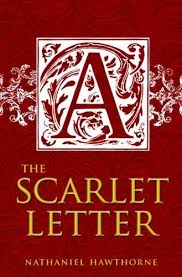 These obsessions may come in the form of images, themes, word choices, or analogies. They may be the obsessions of the actual writer, the character the author is describing, or the persona the writer is assuming. They often come in the form of concrete symbols, like Hester Prynne's red A in The Scarlet Letter or the recurring imagery of hands in the poetry of Richard Siken. The red A, which symbolises Hester's sin, is also hand-stitched; Hester literally takes the situation into her own hands and owns it. Later in the novel, others refuse to acknowledge the original meaning of the letter, with some even saying it stands for "able."
These obsessions may come in the form of images, themes, word choices, or analogies. They may be the obsessions of the actual writer, the character the author is describing, or the persona the writer is assuming. They often come in the form of concrete symbols, like Hester Prynne's red A in The Scarlet Letter or the recurring imagery of hands in the poetry of Richard Siken. The red A, which symbolises Hester's sin, is also hand-stitched; Hester literally takes the situation into her own hands and owns it. Later in the novel, others refuse to acknowledge the original meaning of the letter, with some even saying it stands for "able."
Similarly, the image of the hands repeatedly recurs in Siken's Crush; the speaker does not know what to do with his hands. They crush, both as a form of love and as a form of destruction. The hands are all about violence and agency and connection.
However, symbols can also be less literal. For example, Hazel Grace, the protagonist in The Fault in Our Stars, is a vegetarian. This comes up pretty subtly throughout the novel, and it's not just because the dietary restrictions are difficult for her. It's because, as a dying teenager, she has a lot of guilt about being what she calls a "grenade." She fears that, in her death, she will cause everyone around her catastrophic pain. That's why she tries to minimize the amount of death she causes around her.
As another example, returning to The Catcher in the Rye, we can look to our good friend Holden Caulfield's obsession with the ducks in the park. The ducks survive a less-than-friendly environment, reminding Holden of his own environment, while also consoling him about change. Holden is between states as a teenager, just like the half-frozen pond. None of these symbols are huge revelations, but determining the obsessions will help you identify the important themes of the text.
4. Connect those dots
Once the patterns have all been established, it should be easy to categorize them. That is, these recurring images belong to certain themes in the text. If it's easier, you can write down these patterns and literally begin to connect the dots to find the major themes. Basically, though, you should ask yourself how these themes or images work together. They all belong together for specific reasons, and those reasons are essentially the major themes of a text.
After the major themes are determined, you can determine the reason they exist. What is the author trying to communicate by using all of these elements together?
Categorizing these themes is important because most good novels have more than one theme, so you'll have more to build on if you can link some of them together to form an argument. For example, you can link warnings about modernity in Dracula to the idea of women's sexuality as threatening. In addition, you can link these themes to Christian imagery, the motif of blood, or the Weird Sisters as a symbol. Using all of these elements together, you can ponder the system of thought at play in the text or the obsessions of the author as they weave a web of meaning.
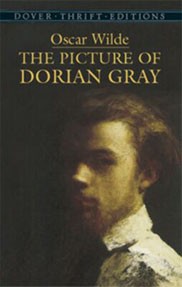 To illustrate the process thus far, we can think of the elements at work in The Picture of Dorian Gray. If we scratch the surface of the novel, we can easily extract the idea that youth and beauty are of paramount importance to the characters. We can also quickly garner evidence of homosexual, or at least homoerotic, characters, especially as a facet of high culture and especially in historical contexts.
To illustrate the process thus far, we can think of the elements at work in The Picture of Dorian Gray. If we scratch the surface of the novel, we can easily extract the idea that youth and beauty are of paramount importance to the characters. We can also quickly garner evidence of homosexual, or at least homoerotic, characters, especially as a facet of high culture and especially in historical contexts.
Now, we can probably determine some obsessions quite easily: Lord Henry's obsession with the color white and Dorian Gray's youthful innocence and beauty, or the yellow book that Lord Henry gives to Dorian and the idea of painting over red sins with white. These obsessions can be grouped into a system of thought, possibly about superficiality, about how influences can be damaging, or about hiding what cannot be hidden.
Now we're getting somewhere!
5. Ask all your questions
Okay, so your close reading should be going pretty well so far. With these close reading strategies, some kind of argument should be forming. Now's the time to ask all your questions. You must ask questions if you can't form an argument, you're torn or confused, or you're almost there but you still have something left to figure out. Ask about anything you still don't understand, anything that needs clarification, or anything you still need to know.
Reader theories work great here. You can ask what-if questions to take different approaches to the text, as a theoretical standpoint will help you find direction in analyzing the text. Is it possible that Ron Weasley is actually a time-traveling Dumbledore? Is it possible that the Horcrux in Harry is the reason the Dursleys hate him so much? Is it possible that Professor McGonagall is a Death Eater? These might sound like crazy questions, but there's actually evidence to support all of these thoughts.
That's why asking questions can be so vital! New approaches to any text can be found with the right questions (and such interesting ones!).
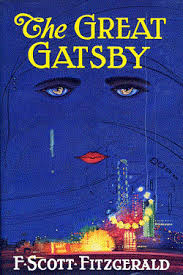 No question should feel unapproachable so long as you're considering the facts of the text and examining the evidence correctly. Here's a question: Is it possible that Nick Carraway of The Great Gatsby is, in fact, in love with Jay Gatsby? You can take anything from his past to the title of the novel to his descriptions of other characters to how the entire novel can be read as poor Nick's attempts to bring retribution to a man he so admires. It's important to ask questions because finding answers requires you to dig into the text.
No question should feel unapproachable so long as you're considering the facts of the text and examining the evidence correctly. Here's a question: Is it possible that Nick Carraway of The Great Gatsby is, in fact, in love with Jay Gatsby? You can take anything from his past to the title of the novel to his descriptions of other characters to how the entire novel can be read as poor Nick's attempts to bring retribution to a man he so admires. It's important to ask questions because finding answers requires you to dig into the text.
In fact, the author has already provided questions, and if you read closely, the text contains their answers. Since you usually can't ask the author, it's up to you to perform a close reading of the text and see what you can uncover.
6. Figure out why it matters
You have the basics, the evidence, the obsessions, the patterns, and the questions. Here comes the most important part of close reading: So what? Why does your analysis of these things matter? What is the point of everything you found? How does it all work together? Is there a big takeaway?
These are huge questions, and that's why it's important to incorporate all of the close reading strategies into one big process. There is an argument to be made, but why is it significant?
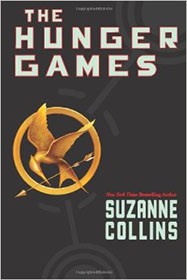 If your argument is that femininity in The Hunger Games is a trait that is painted as a weakness, then you better have some evidence, and you better be able to strike down counterarguments. Your building blocks can be the fashion styles of the citizens of Panem, the character traits of Katniss Everdeen, and Peeta Mellark's ability to bake a mean cake, but you have to be ready to face backlash. What about Effie's character development? What do you mean by "masculine traits"? Why did Katniss choose Peeta over Gale Hawthorne, then?
If your argument is that femininity in The Hunger Games is a trait that is painted as a weakness, then you better have some evidence, and you better be able to strike down counterarguments. Your building blocks can be the fashion styles of the citizens of Panem, the character traits of Katniss Everdeen, and Peeta Mellark's ability to bake a mean cake, but you have to be ready to face backlash. What about Effie's character development? What do you mean by "masculine traits"? Why did Katniss choose Peeta over Gale Hawthorne, then?
Finding the bigger picture, or the takeaway, of the story is arguably the most rewarding part of reading a well-written piece of writing. The text is a writer's thesis. The arguments are embedded in the writing. Discovering them is like doing the same work in reverse. It's tricky, but all good authors have a hidden thesis. The evidence, while hidden, is worth exhuming; it's the whole point of close reading.
7. Go beyond the text
Take heed: in the list of close reading strategies, this one should be your absolute last resort. Most close reading requires you to engage specifically with a text and the text alone. However, if you are absolutely and totally stuck, you may want to do some research, provided that this is permitted by your professor or teacher for this particular assignment or essay. Sometimes, if a text is particularly difficult or if the context is vital to its understanding, research is necessary.
 You can look at the author's biographical information. As an extreme example, if you don't know that The Diary of a Young Girl is an actual diary, then you probably won't be able to obtain a close reading of the text. Less dramatically, if you don't know that Frankenstein was written by a woman, you won't be able to discuss the pioneering of the genre.
You can look at the author's biographical information. As an extreme example, if you don't know that The Diary of a Young Girl is an actual diary, then you probably won't be able to obtain a close reading of the text. Less dramatically, if you don't know that Frankenstein was written by a woman, you won't be able to discuss the pioneering of the genre.
Speaking of which, you could also look at genre conventions: if you're unfamiliar with the gothic genre, you might not be able to pick up on the motifs of Frankenstein. Delving into the context and historical background of a text can also be imperative; readers of Pride and Prejudice or Animal Farm without an understanding of the novels' respective eras will likely be unable to obtain the same level of close reading as others who have consulted outside sources.
Expanding on another source of criticism can also help a reader do a close reading. You may wish to argue with your chosen source to become the devil's advocate and say something new, or you may wish to build on their knowledge further.
It's always important, though, to avoid letting an outside source speak for you. Anything you say about an outside source should focus on saying something new, framing something in a new way, or helping to achieve a deeper understanding of the text. Above all, you're answering two questions in your close reading:
- What is important in this text?
- Why does it matter?
Conclusion
With these close reading strategies, you can explain both how the elements of the text work together to communicate a specific point and explain why they do so to achieve a particular end. Instead of just pointing out obvious facts or literary devices, it's important to outline a broad claim about what the author is communicating.
Once you've established an idea and proven how it works, you can discuss what the concept achieves or how it can advance a deeper understanding of the text at hand. This deep understanding is why you began digging in the first place, and close reading is all about getting your hands dirty.
So, roll up your sleeves and start digging! You'll be amazed at what you can uncover.
Image source: Remains/BigStockPhoto.com
